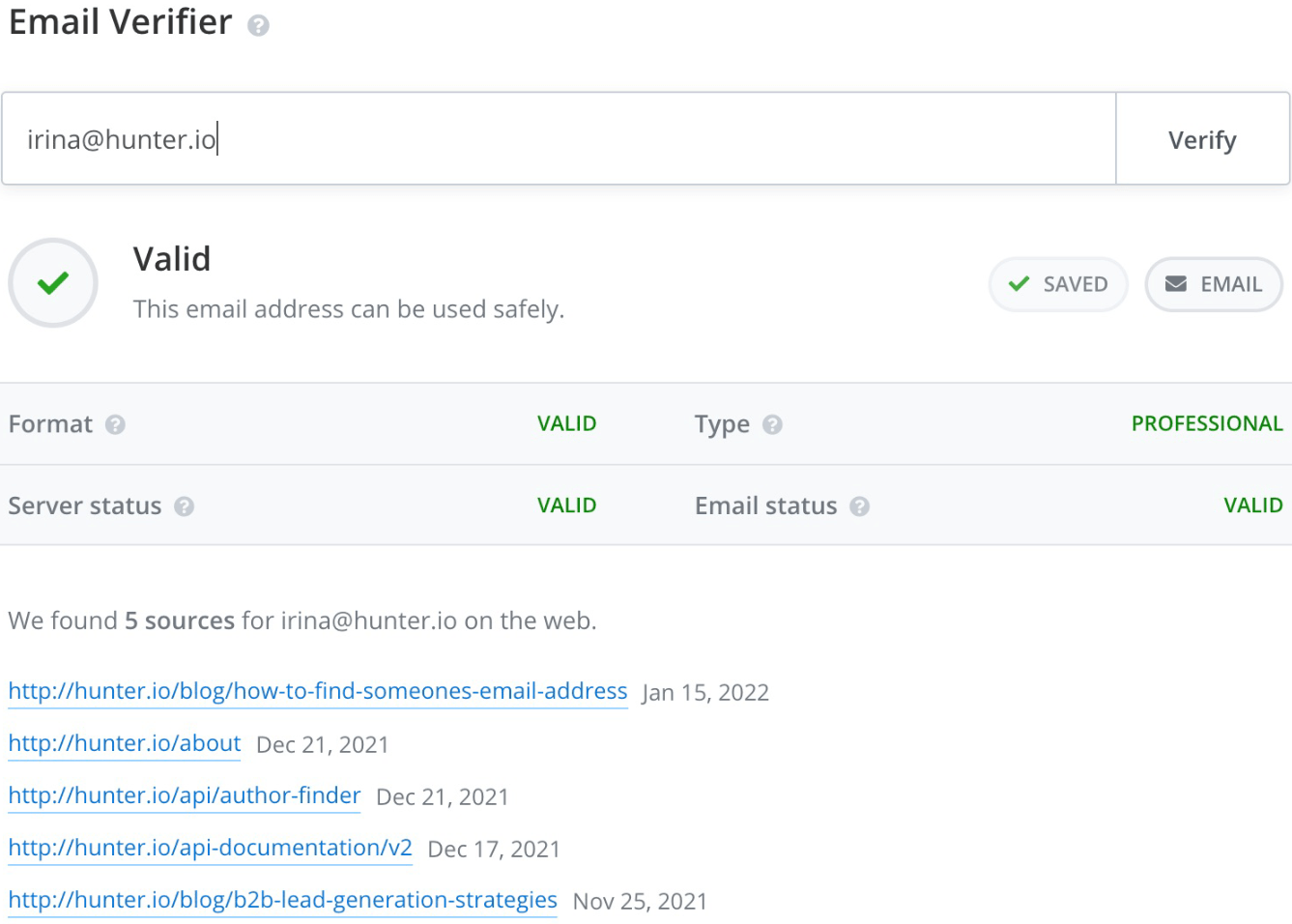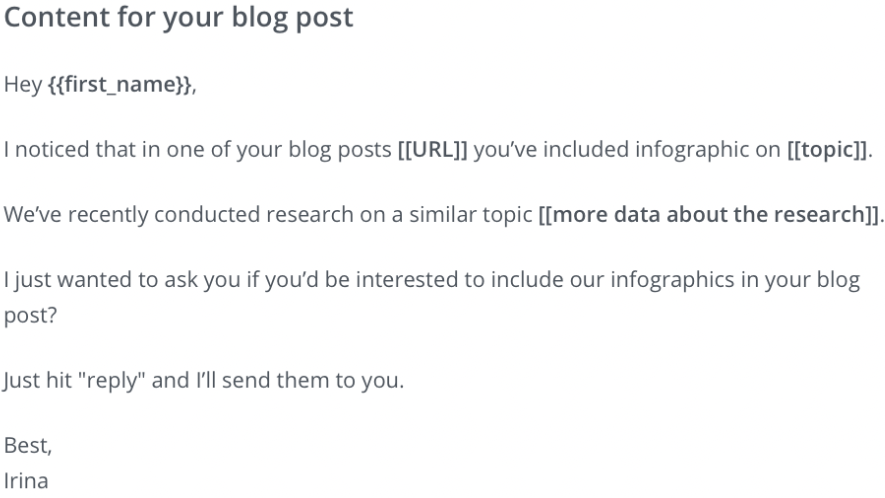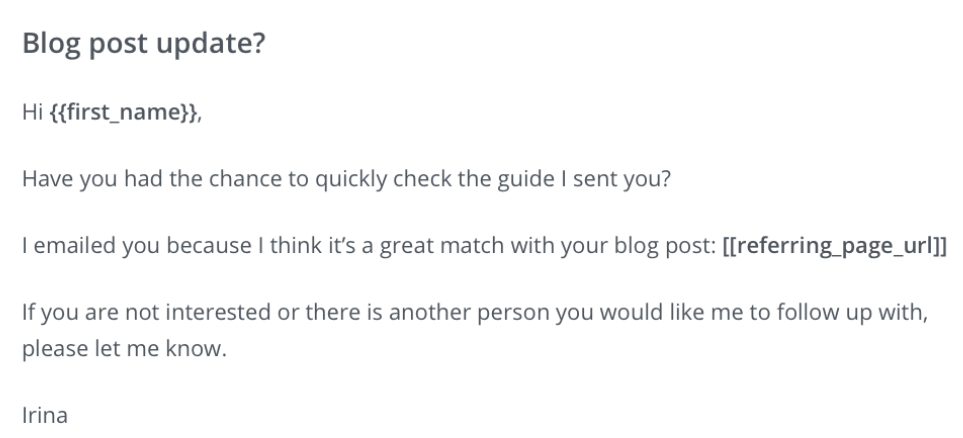Link building is the process of getting backlinks from authority sources and building social proof for Google. It’s one of the most effective ways to improve domain rating (DR) and consolidate your position in search engine results pages (SERPs).
Folks at uSERP recently surveyed SEO professionals and found that 58% believe backlinks are a crucial SEO factor. But acquiring high-quality links is not an easy task—it’s one of the rarest SEO techniques that involve one-on-one communication.
Cold email outreach can be the solution if you’re struggling in your link-building efforts. It’s cost-effective, highly scalable, and gives you personalization rarely matched by others. But to make cold email outreach for link building work, you have to blend the science of SEO, the intuition of prospecting, and the art of communication.
This article will go over six steps you need to follow to use cold email outreach to build high-authority links for your website.
But before that, you must have two things ready:
- Superior content
- Willingness to research
Let’s jump in!
1. Build a list of relevant prospects
Google focuses on the quality of backlinks rather than the quantity. The key to getting quality backlinks is extensive research. Here are two ways you can research to build a list of relevant prospects:
A. Reverse engineer competitors
There’s a good chance your competitors are building links at scale and battling with you in SERPs. If you can’t crack their internal strategy, you can copy them. Run their websites on Ahrefs’ Site Explorer to find all the referring domains. Tweak the filters to narrow down on specific websites to get a list of pages relevant to your strategy. If the domains refer to your competitors, they might refer back to you as well—all you have to offer is better content. Backlinko’s Brian Dean invented the skyscraper technique to game competitors’ backlink profiles by providing up-to-date, in-depth, and better content.
B. Manual search
While laying out a link-building strategy, you should target a few prospects of your own. You can target a brand you’ve been following for a while, an industry leader who’s constantly discussing competitors’ content, a niche micro-influencer, or anyone visible in your industry with innovative link-building approaches. However, ensure your targeted domain has a high DR (60+), an incredibly engaged audience, and a social presence.
You will have a solid prospect list once you combine your wishlist and competitors’ referrals. Now, you have to find contacts to reach out to these websites. Try landing pages, Google search operators, and LinkedIn company pages to find the decision-makers. When it comes to link building, the responsibilities generally lie with the Head of Content, Content Marketer, Content Strategist, SEO, Head of Marketing, or Outreach Specialist.
If you’re not able to find their email address, use an email finder to acquire the specific address. Next, run the email addresses through an email verifier to trim down the list. It’s vital to verify email addresses in order to:
- Avoid emailing to inactive or wrong addresses
- Avoid spam traps
- Improve email deliverability

Now that you have a list of prospects, it’s time to write an email.
2. Focus on crafting personalized subject lines and email openers
Messing up your subject line may as well doom your cold outreach campaign. According to an OptinMonster study, 47% of recipients open an email based on the subject line. However, the worrying figure is that 69% of recipients mark emails as spam based on the subject lines.
Here are a few ways you can perfect your subject line and improve the open rate:
- Keep it short, and offer value right in the beginning
- Mention the name of the recipient, product, or anything that draws attention
- Don’t forget to experiment with the tone and punctuation
- Do not over-promise in the hope of getting read. This trick eventually leads emails to the spam folder
- Use the preheader text box to expand the conversation
It’s important to use an icebreaker to spark intrigue. While prospecting, you’ll likely come across snippets in your prospect’s LinkedIn profile or Google search. Use that information to build the conversation, automatically pushing you up the pecking order.
Here are some ideas for you to build on:
- Congratulations on your new role at {{company}} as {{position}}
- I loved your recent article on [[article name]], and I noticed that you mentioned [[similar article]]. [[insert unique observation about the article]].
3. Write a personalized email copy
Your cold email should demonstrate the fact that you have researched the prospect. Content and SEO professionals receive cold email pitches every day, so the only way to stand out is by writing a professional email that gets their attention.
Before going straight to the email body, create an outline based on your purpose. The wireframe should include a logical flow that removes any friction when reading or skimming the copy. It should also capture the ideal tone. Since link building is dependent on relationships, your style shouldn’t come across as obnoxious in any part of the copy.
Once you have clarity about the copy, briefly explain who you are and your purpose in reaching out to the recipient. Cold outreach works the best when you have a strong offer and a singular focus. Publications must see the value in going back to their page and replacing a competitor’s link with yours or adding a new section for your link. You can convince them by writing short, punchy paragraphs with bullet points and using a lot of white spaces.
Finally, leave a strong CTA such as a meeting link to take the collaboration to the next stage. It’s essential to leave no stones unturned while emailing someone for the first time.
Here’s a great example of cold emailing:

4. Automate your cold outreach campaigns
Despite the hands-on approach, cold email is still a numbers game. You can’t manually send hundreds of emails each day, follow up, reply, negotiate, and get the links simultaneously. To truly scale link building, you need to automate aspects of cold email outreach campaigns.
An email campaign automation tool can help you build email templates and schedule follow-ups at your preferred time. It can track the open rate and failure rate and allow you to tweak the campaign as you go. You can then set up a drip campaign to run outreach on autopilot.
Here’s a follow-up email template that can be fully automated:

With campaign automation, you can save marketing costs and focus on manual tasks like negotiating and tracking your campaign metrics to improve further.
5. Track your campaigns
One thing about email marketing is that there’s no standard playbook that works for everyone. Email expectations and performance vary from person to person. One way to ensure your cold email outreach campaign doesn’t fall flat is by constantly tweaking, testing, and tracking metrics.
A/B testing is a staple of email campaigns, and you need to leverage its potential. Segment the email list into smaller batches and try different subject lines, email openers, and sign-offs. You will not be able to understand what works better if you don’t compare it with another version.
While doing all of these, keep an eye on metrics:
- Open rate: the percentage of people who opened your email
- Click-through rate (CTR): the percentage of people who clicked on the link inside your email
- Conversion rate: the percentage of people who clicked on the CTA
- Hard bounce: hard bounce is where delivery fails.
- Soft bounce: Email gets accepted but is temporarily undeliverable
6. Negotiate
Negotiation is the final hurdle in getting the desired backlink. In most cases, the more prominent, more authoritative website is doing you a favor by linking to your page — you have to make it worth the effort. Make them see value in the exchange by offering a quick turnaround time, a shoutout on your social media channel, a podcast interview with their marketing head, or a sustained partnership to plug content gaps and enrich each other’s channels. Keep your focus on their interests, and have a backup plan if plan A doesn’t work.
Wrapping up
Link building is a constant process that needs to be automated and personalized to get results. Testing the waters with backlinks might be the solution if you’re stuck with a low DR and dwindling SERP performance.
The opinions expressed here by Guest Contributors are their own, not those of Rise Marketing.